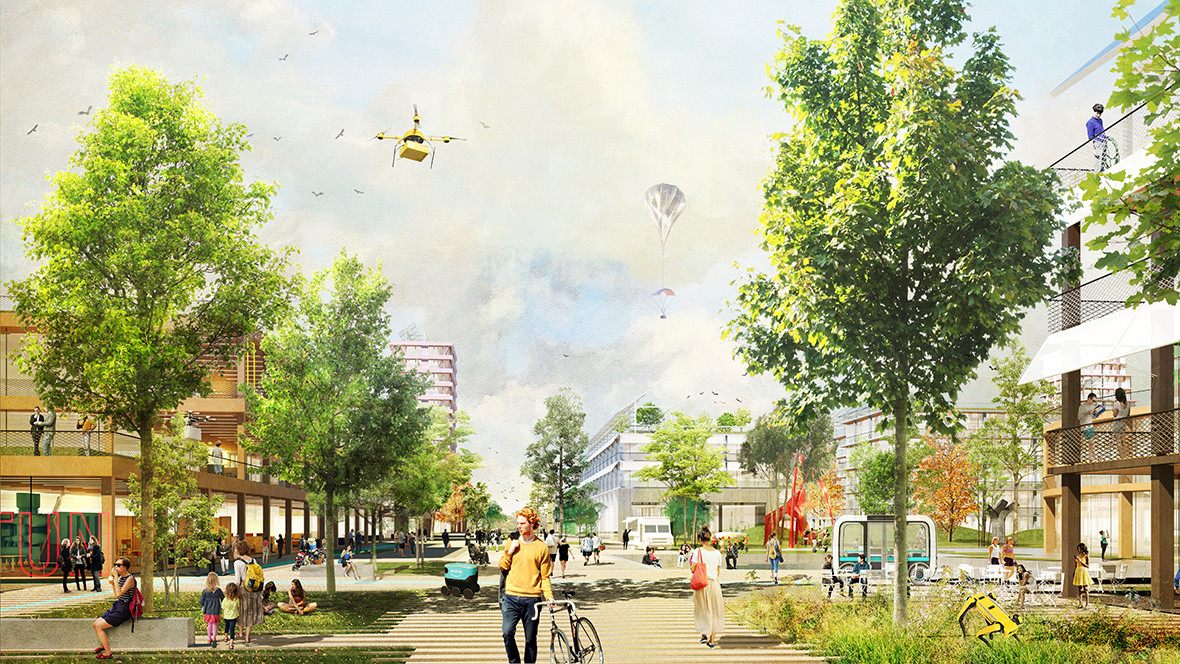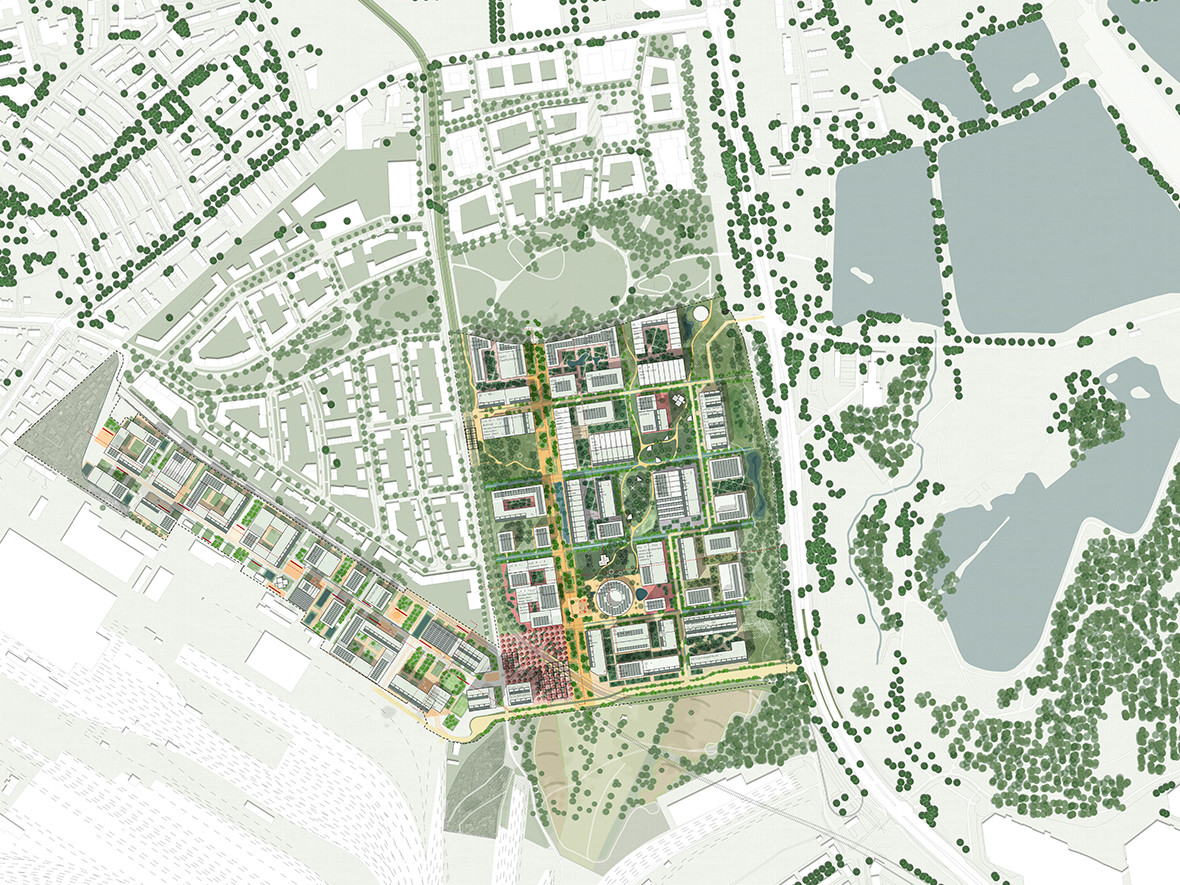


The new Technische Universität Nürnberg (University of Technology Nuremburg) will be a living laboratory and a tech campus that is fit for the future. Alongside the technological and scientific innovations that will be produced over the coming years, spaces for teaching, research, and innovation will be gradually integrated and tested. During this process, the brownfield land will become an experimental landscape and gradually transform into a dynamic, urban campus that will continue to offer plenty of space for nature and sustainability.

Our urban and open space design follows a reverse approach: we first design a landscape structure based on the landscape elements and soil conditions we find on-site. Gradually filling this landscape grid with buildings enables us to create a campus that is in an inherently complete, usable state after each stage of development. The open landscape forms a robust framework for the development of the campus and can be partially filled with temporary uses or managed as a test area. The campus evolves into a low-cost transformation platform that aptly symbolizes the theme of innovation. An inner network of roads, paths, and infiltration systems springs from the landscape grid. This network joins the existing and planned connections to the surroundings to form the main structure of the campus, creating a functional and varied network of public connections and spaces. This results in a framework for the various departments, institutions, and facilities, as well as for the connecting green structures.

The programmatic units are organized in an east-west direction in a sequence of horizontal strips. Being embedded in the transformative open space, they are also flexible enough to be adapted and expanded. Green axes connect the campus’ main centralities. A delivery loop connects the campus’ two entrances and provides space for mobility and energy hubs – these multifunctional buildings keep the campus largely car-free. The Academic Mile, a north-south boulevard, connects the two squares at the tram stops; a diagonal green axis with activity points joins the LabCity square to the Volkspark via the existing stretch of woodland; and the Knowledge Yard functions as an experimental playing field, opening up the site to the west. Urban focal points are strategically positioned along the major axes and entrances to the campus.

The transformation process consists of several feedback loops of take, add, test, develop, and reuse, reflecting the future-oriented outlook of the innovative campus.
| Location. | Nürnberg, Germany |
|---|---|
| Assignment | Structural and framework planning |
| Size | 37.5ha |
| Design | 2020 - 2021 |
| Status | Competition, finalist |
| Client | Staatliches Bauamt Erlangen-Nürnberg |
| In collaboration with | KCAP, Buro Happold |